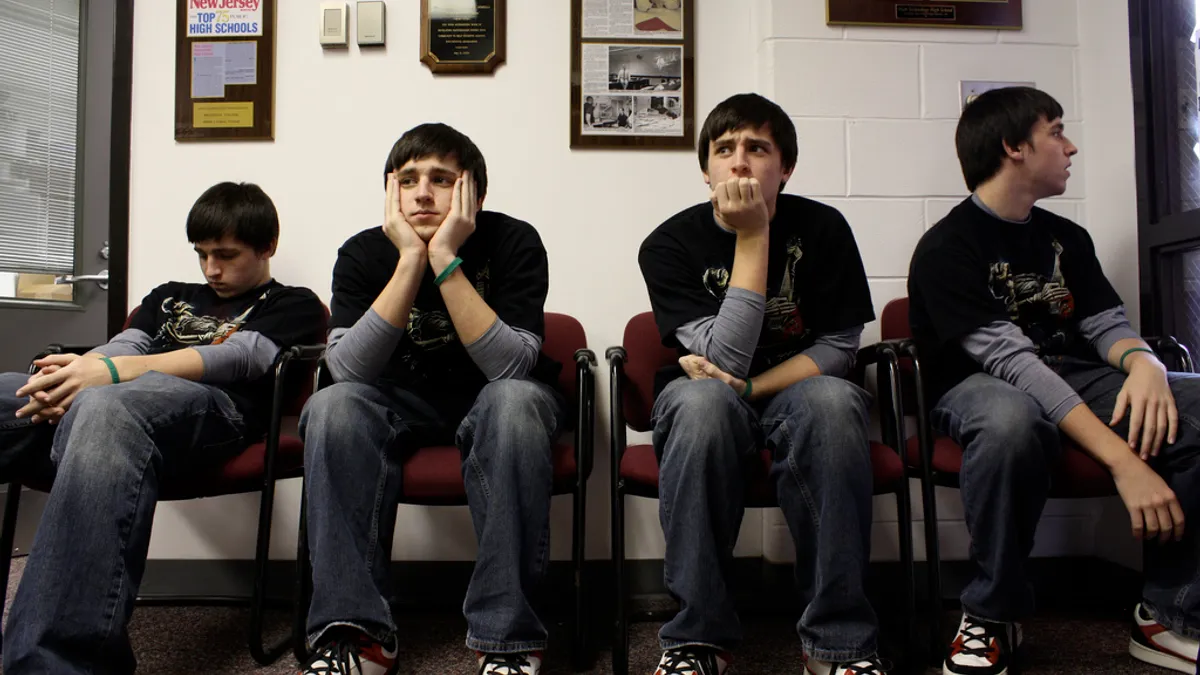Dive Brief:
- A Hechinger Report article discusses the findings of a recent study showing students with disabilities are being suspended at a higher rate than their peers, particularly black students with disabilities who miss three times as many days of school in suspension than white classmates with disabilities.
- The study’s authors wrote that the missed time results in “huge inequities in the opportunity to learn”, citing other research showing such suspensions greatly increase the likelihood a student will be in the criminal justice system.
- The researcher’s report points to data from Mississippi where, during the 2015-16 school year, for every 100 black students with disabilities 113 days of school were missed compared to 44 for their disabled white classmates.
Dive Insight:
One study shows that students with disabilities are dramatically over represented in the juvenile justice system, perhaps making up 70% of that population, most with emotional disturbances and learning disabilities.
While numbers vary according to methods of reporting and students moving in and out of the juvenile justice system, the Hechinger Report has also reported that while 13% of students in the Mississippi’s public schools are in special education programs, in one youth juvenile detention facility 27% were designated as having disabilities, while at another 50% qualified for special education.
The PACER Center has reported the problem is connected to a lack of training among teachers and another report says a lack of special education teachers contributes. A counselor shortage also plays a role.
The prison lobby influences school policies about discipline, according to reports, by advocating for harsh punishments for small infractions – including referrals to police for violations such as ignoring the school dress code and stealing a soda from a teacher lounge.
A Harvard University education school lecturer has said that the school-to-prison pipeline causes African-American students to be three times more likely to be suspended or expelled — and that then those students are three times as likely to fall into the juvenile justice system. They are 11% of the population yet 31% percent of the students suspended.












